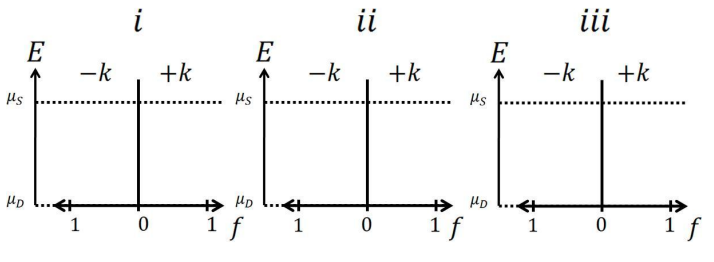4.14: Problems
- Page ID
- 51318
1. Consider the metal/nanowire/metal device shown below. Assume the nanowire is an ideal 1-dimensional conductor with no scattering.
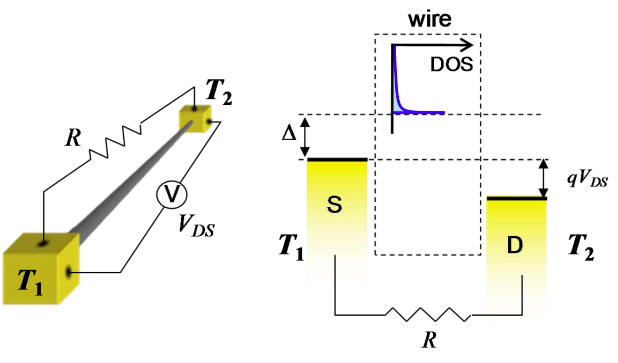
The source contact is heated to temperature \(T_{1}\), while the drain contact remains at temperature \(T_{2}\). Assume that the energy separation between the source and the bottom of the conduction band (\(\Delta\)) is independent of bias. Assume also that \(\Delta \ggkT_{1}\).
(a) The contacts are now shorted together, i.e. R → 0. What is the current that flows? (This is the 'short circuit current').
(b) Next assume the contacts are returned to open circuit, i.e. R → ∞. What is the voltage between the contacts? (This is the 'open circuit voltage')
2. The dispersion relation for a relativistic particle is given by \(E = \sqrt{p^{2}c^{2}+(m_{0}c^{2})^{2}}\) where \(E = \hbar \omega\) and \(p = \hbar k\). Find the group velocity of this particle.
3. The group velocity is given by \(v_{S} = \frac{d}{dt} \left< x\right>\). Show that \(\frac{d}{dt} \left< x\right> = \left< \frac{1}{\hbar}\frac{dE}{dk}\right>\).
4. Find the effective mass for an electron in a conductor with the dispersion relation:
\[ E(k) = 5-2Vcos(ka),\ |k|<\frac{\pi}{a} \nonumber \]
where V and a are positive constants.
5. Graphene exhibits a photon-like dispersion relation. Assume the carrier velocity is independent of the carrier's energy and equal to the speed of light, c. Based on the high velocity of carriers in graphene it is often argued that graphene transistors will be faster than similar transistors constructed from other materials.
(a) Draw the dispersion relation of a graphene wire. Assume the wire has only one mode.
(b) Given a wire of length, l, constructed of ballistic graphene, assume we inject a carrier pulse as shown below. f is the distribution function, i.e. when f = 1 each state is completely full. What is the applied voltage?
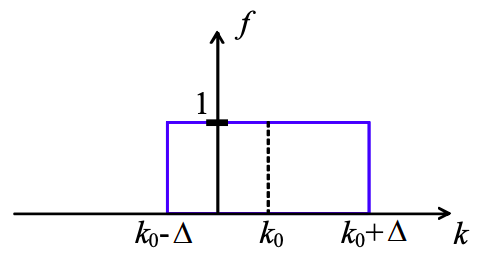
(c) How many carriers are contained in the pulse?
(d) Determine the current carried by the wire from the group velocity and number of carriers.
(e) What is the conductance of the wire?
(f) Now assume that the graphene is used to drive a load capacitance of value C. What is the time constant of the system? How does the graphene wire compare to other 1d wires?
6. This problem refers to the ballistic 1-D wire below. The X's in the wire are representative of elastic scattering sites, each with transmission, Τ. Assume \(E_{C} < \mu_{S}, \mu_{D}\) where
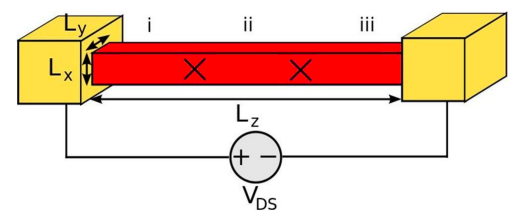
(a) For T = 1.0, plot the filling function at positions (i), (ii), and (iii) along the z-axis.
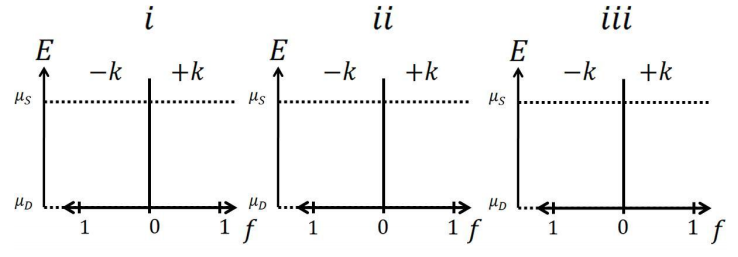
(b) For T = 0.5, plot the filling function at positions (i), (ii), and (iii) along the z-axis.
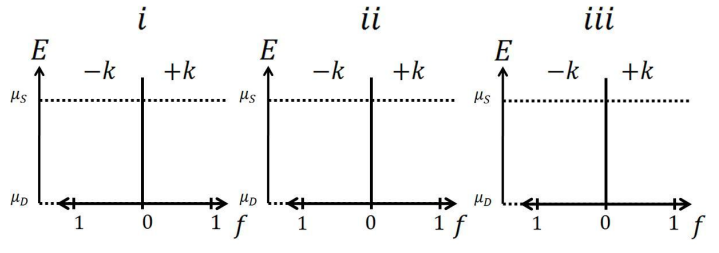
(c) Consider a very large number of scattering sites along the wire, each with T = 0.5. Plot the filling function at the source (i), at the midpoint of the wire (ii), and at the drain (iii).
